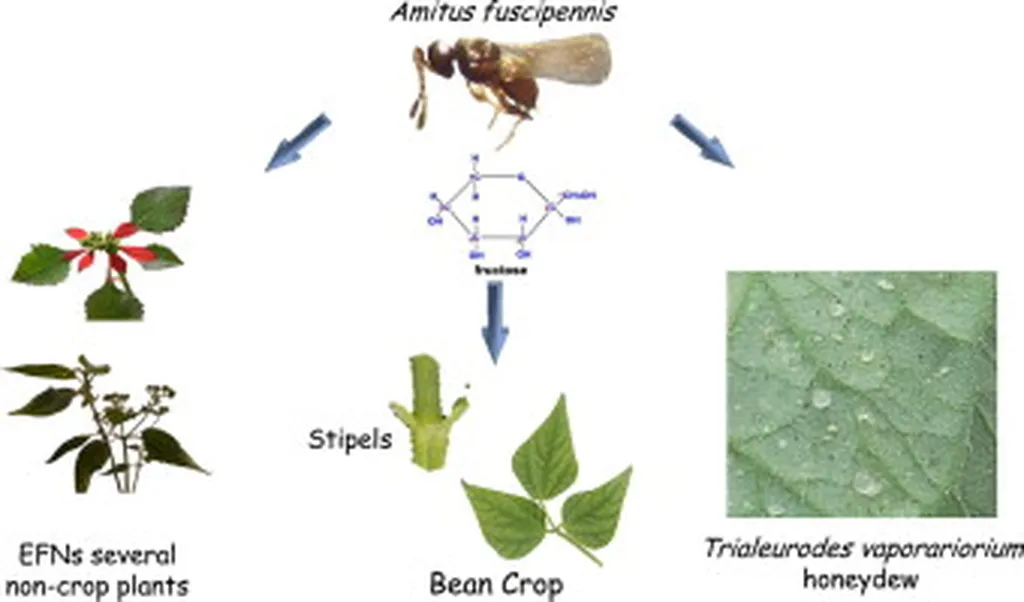In the relentless battle against the devastating whitefly, Bemisia tabaci, a new review published in *Frontiers in Agronomy* offers a beacon of hope for farmers and agronomists worldwide. This tiny, sap-feeding pest, which transmits over 350 plant viruses, has long plagued tropical and subtropical crops, causing significant yield losses in tomatoes, potatoes, cabbages, cotton, and soybeans. The conventional reliance on synthetic insecticides has not only led to insecticide resistance in B. tabaci but has also wreaked havoc on the environment and non-target organisms. Enter the realm of biological control, a sustainable alternative that leverages the power of natural enemies.
The review, led by Abdul A. Jalloh from the Department of Entomology at the University of Georgia, delves into the effectiveness of predators, parasitoids, and entomopathogens in managing B. tabaci populations. “Biological control using natural enemies offers a promising avenue for sustainable pest management,” Jalloh asserts. “It’s not just about controlling the pest; it’s about preserving the ecological balance and ensuring long-term agricultural productivity.”
Key biocontrol agents highlighted in the review include the predatory beetle Delphastus catalinae, the mirid bug Macrolophus pygmaeus, the parasitoid wasp Encarsia formosa, and various entomopathogens. These natural enemies have shown significant potential in curbing whitefly populations, but their implementation comes with challenges. Environmental sensitivity, host specificity, cost, scalability, and compatibility with existing insecticides are just a few hurdles that researchers and farmers must overcome.
The commercial impacts of this research are profound. By reducing reliance on synthetic insecticides, farmers can cut costs and mitigate environmental degradation, ultimately leading to more sustainable and profitable agricultural practices. “The goal is to create a resilient agricultural system that can withstand pests and diseases without compromising the environment or the farmer’s livelihood,” Jalloh explains.
Looking ahead, the review emphasizes the need for genetic and ecological innovations, improved delivery mechanisms for entomopathogens, and the development of climate-resilient biocontrol agents. Farmer-centric training and policy support are also crucial for the successful implementation of these strategies. “We need a multidisciplinary approach that brings together scientists, farmers, and policymakers to create a sustainable future for agriculture,” Jalloh concludes.
As the agricultural sector grapples with the challenges posed by pests like B. tabaci, this review serves as a timely reminder of the power of biological control. By harnessing the natural enemies of pests, farmers can achieve long-term pest suppression while preserving the integrity of agricultural landscapes. The journey towards sustainable agriculture is fraught with challenges, but with innovative research and collaborative efforts, the future looks promising.

